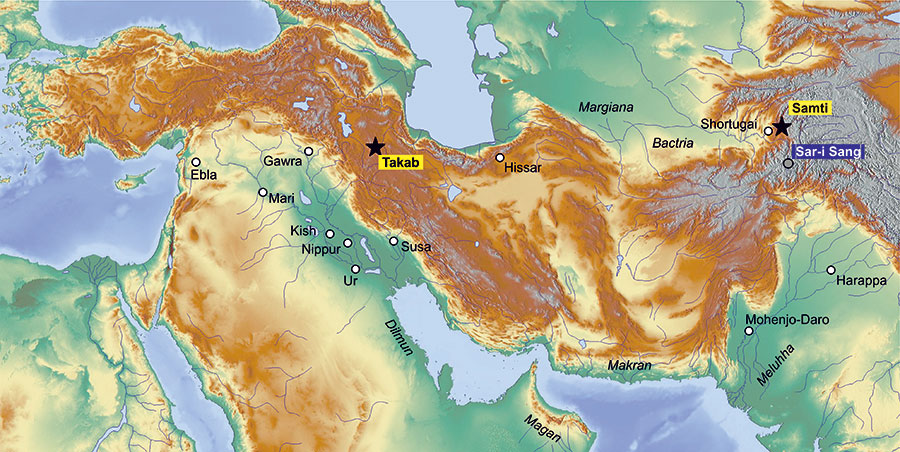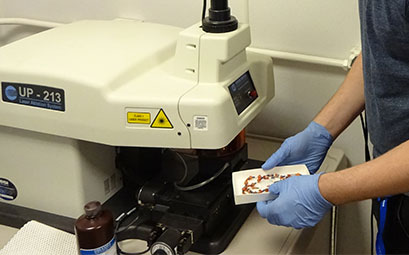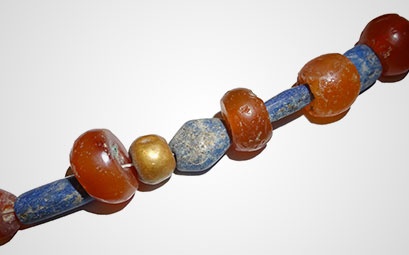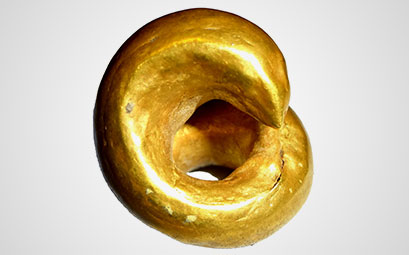Sourcing Mesopotamian Gold
Curatorial Section
Research Discipline
Archaeology
Expand Global Research
Over more than a century, we’ve opened up endless exploration across six continents. New field work endowments will ensure our continued leadership in national and international field research and discovery.
Give Now- Time Period Studied
-
This project focuses on artifacts that were produce in the 3rd millennium BCE, but additional artifacts dating between the 4th and 1st millennium BCE are analyzed to investigate changes through time.
- Location Information
-
The gold artifacts come from the sites of Ur, Kish, Nippur, Hissar, and Gawra, predominantly located Mesopotamia, modern Iraq.
- Researcher(s)
-
- Moritz Jansen, Center for the Analysis of Archaeological Materials (CAAM)
- Andreas Hauptmann, German Mining Museum
- Sabine Klein, German Mining Museum
- Laure Dussubieux, Field Museum
- Project Summary
-
The project examines gold artifacts from different sites in Mesopotamia and beyond, with a focus on objects dating to the 3rd millennium BCE. Methods borrowed from geochemistry, including characterization of the trace elemental and isotope composition, are used to evaluate the circulation and exchange of gold. This current project is rooted in the long-term analysis of the hundreds of gold artifacts excavated at the site of Ur and now held in the collections of the Penn Museum. Most of the gold artifacts from Ur were discovered in the Royal Cemetery and consist mainly of vessels, weapons, and jewelry, such as beads, rings, and hair ornaments. The large concentration of early gold objects and the fact that there are no metal-bearing deposits in Lower Mesopotamia prompts a question concerning the origin of the raw material used to create these artifacts. Was the gold extracted from hard rock or alluvial deposits? What can we learn about the geological setting of these deposits? And is the same geochemical pattern found in artifacts from distinct sites? Our preliminary analyses identified two rich alluvial deposits in Iran and Afghanistan as potential source for the geological origin of the gold from Ur. The results contribute significantly to the understanding of long-distance trade networks for raw materials in Mesopotamia since the 3rd millennium BCE.
Work in 2018
In June 2018, Penn Museum’s archaeometallurgist Moritz Jansen conducted a research trip to the Field Museum in Chicago, which holds almost 10,000 artifacts that were uncovered during excavations at Kish in the 1920s and 30s. In a collaborative project, the entire collection of about 50 gold artifacts was analyzed using the Field Museum’s in-house Laser Ablation Mass Spectrometry. Using cutting-edge equipment, the project defined the geochemical fingerprint of these artifacts in order to investigate the geological origin of the gold through its chemical composition. The analyses were partly funded through an NSF subsidized grant program by the Field Museum. - Sponsors
-
- Penn Museum
- Field Museum
As of the 3rd millennium BCE, gold objects are frequently found within burial contexts in Mesopotamia, but as there are no metal-bearing deposits in the region, sources of the gold are unknown. Analysis of the chemical composition of artifacts from sites including Ur, Kish, Nippur, Hissar and Gawra, now held at held in the collections of the Penn Museum and the Field Museum, may illuminate the geological origin of the gold found in these burials.






